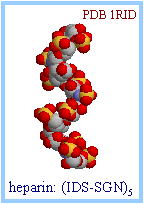
Heparin

Heparin
Heparin is a drug that works as an anticoagulant, which means that it prevents blood clots from forming and prevents existing blood clots from expanding. It was orginally extracted from the liver, but now it is mostly manufactured synthetically. Heparin, however does not actually dissolve existing blood clots; it only prevents them from forming or expanding.
Heparin is usually given to patients who are suffering from a stroke, a heart attack, or a blood clot; it is used to prevent the blood clots from expanding to allow the body's natural mechanism, or other blood clot dissolving drugs, to break down the clot. It may also be used to prevent blood clots from forming when a patient undergoes open-heart or bypass surgery or dialysis or when a patient has a condition that puts them at risk for heart attact, stroke or other blood clots (for example, certain kinds of irregular heartbeat rhythms).
Heparin is also often used as a flush, which is a small amout of fluid run through an IV port or lock to dissolve any blood clots the patient might have formed that could block the IV fluid from entering the vein, particularly when the IV has been connected but no fluid has been administered to the patient in several hours. However, the concentration of heparin used to give a flush is significantly lower than that used for medical treatment.
Heparin must be given by injection; when given orally, the body digests it before it can be made of any use.
Heparin is measured in Units, but these units are not the same volume as the Units used to measure insulin or penicillin. Common concentrations of heparin are 1000 units per mL, 5000 units per mL, and 10,000 units per mL; these can be used for IM or s.q. dosing, or diluted in a diluent liquid for IV use. For heparin administration as an IV flush, common concentrations are 2 units per mL, 10 units per mL, 50 units per mL, or 100 units per mL.
Often Heparin comes in premixed IV bags containing heparin in normal saline or heparin in D5W. Such bags are marked with red writing indicating that they contain heparin; this is to prevent accidental confusion of a premixed heparin bag with bags containing other IV solutions, which is very dangerous, since accidental dosage of heparin can have such severe consequences. Below we can see the label for such a premixed bag:
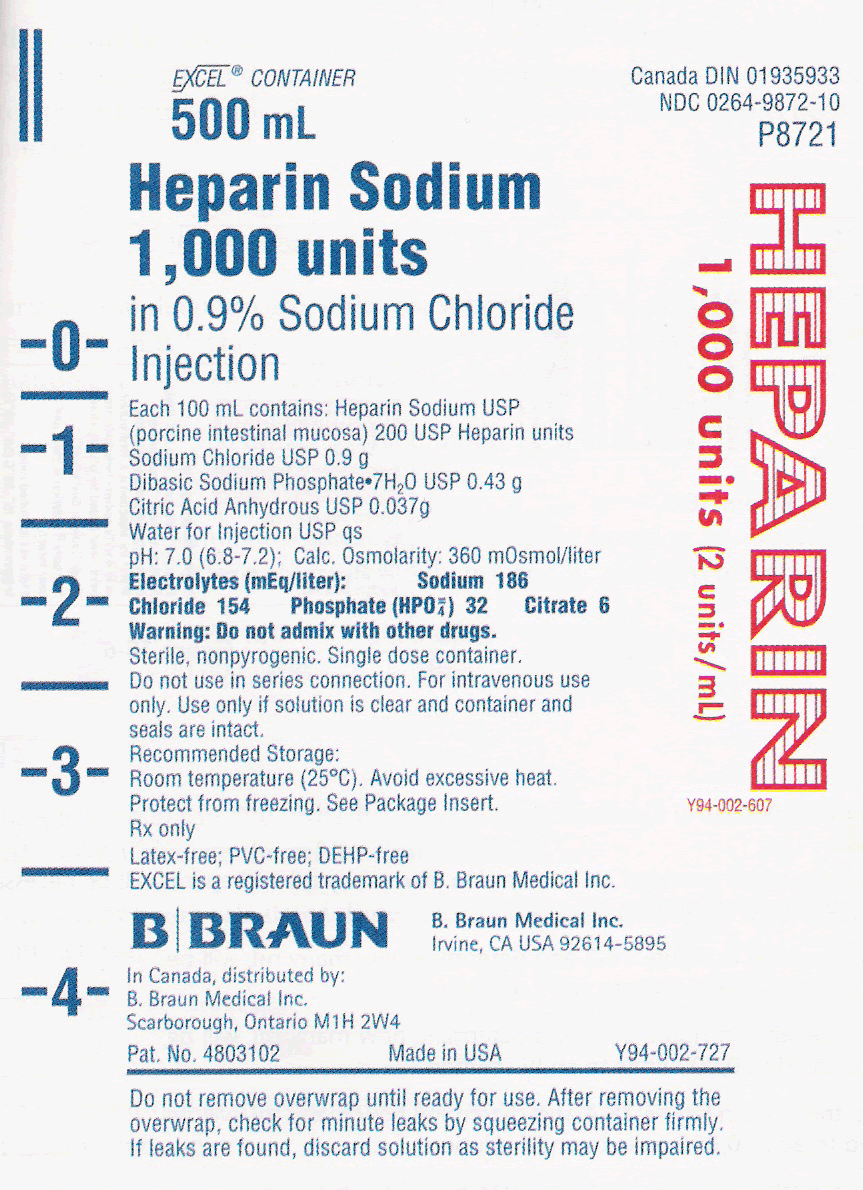
If a premixed solution of heparin is not available at the concentration that you need, you can draw the appropriate dosage out of a vial of heparin and add it to a compatible IV fluid (compatible IV fluids include dextrose in water, saline, dextrose in saline, and lactated ringers/ringers lactate). Below we can see the labels of several heparin vials of varying strengths which can be used to make a heparin IV solution by withdrawing the volume necessary to obtain the desired number of units and then injecting the medication into a prepared bag of IV fluid:
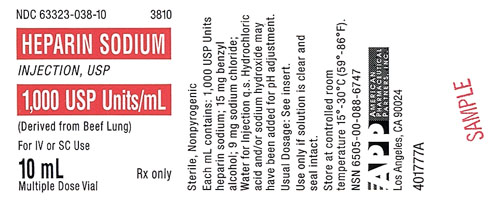 |
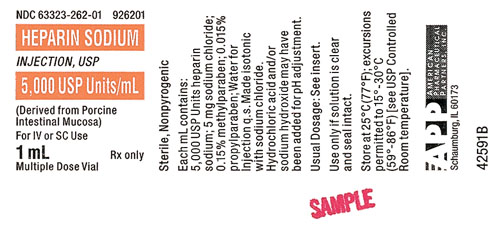 |
 |
The above heparin vials all have high concentrations that would be used for drug orders of heparin intended to treat specific conditions; however, below we can see two vials of heparin in a concentration that would be used for an IV flush:
 |
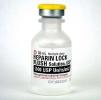 |
The correct dosing of heparin is critical; the safe range for an adult is 20,000 units to 40,000 units per day. If an order is written that would cause the patient to receive less than 20,000 units or more than 40,000 units in a single day, the dosage should not be administered, and the nurse should check with the doctor who wrote the order. Any patient dosed with heparin will have regular blood tests done to check their coagulation times so that the dosage can be adjusted to the patient's response to the drug.
If too little heparin is given, new blood clots could form or existing blood clots could expand causing or worsening stroke, heart attack, damage to limbs cut off from the blood supply by the clot, or damage to the lungs by clots that become dislodged and travel to the lungs.